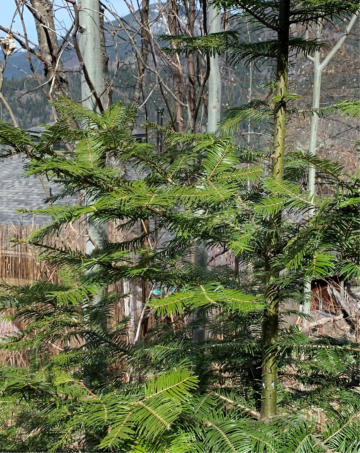
Activity:
While on a walk in your neighbourhood or local greenspace, stop for a closer look at some conifer trees. Many people think that conifer means ‘evergreen’ but the word actually means ‘cone-bearing tree’. Not all conifers keep their leaves (which are usually needle-like) all year long, there is one notable exception in our area, the Western Larch.
1. A dichotomous key includes a sequence of choices or clues that can be followed in order to lead to the correct name of a tree. Using the Tree Id Key, you will answer questions and follow the arrows to arrive at the name of the species you are looking at.
2. Once you find a conifer tree that you would like to identify, start by ‘shaking its hand’ (that’s right, reach out and feel its branches–gently, it could be a spiky spruce!).
3. Now, grab your Tree ID Key and start identifying.
4. Continue to follow the appropriate arrows on the tree until you arrive at the correct answer. If you’re new to tree identification, take a picture of your tree and cross reference your finding using the Tree Book or another resource you have access to. (Ben Gadd’s Handbook of the Canadian Rockies is a great one!)
Note: You probably won’t find all of the trees on this key in the same location, since they have different habitat requirements and geographical distributions. Which trees are most abundant in your area?

Extension Ideas:
1. Complete the activity in 2 different locations and compare/contrast the tree species you find in each. Take notes in your nature journal. If possible, try to make your locations as different as possible (i.e. valley bottom vs. higher elevation, or dry grassland vs. marshy area). Which location has a greater diversity of conifers? Why do you think this is?
2. Can you make your own dichotomous key for broadleaf (aka deciduous) trees in your area? Use the Tree Book or another resource you may have. Start by making a list of species that are in your area. Sort your list by the unique characteristics of each tree. Once you have these characteristics, use a template similar to the tree identification key you used for the activity above to build your own key.









